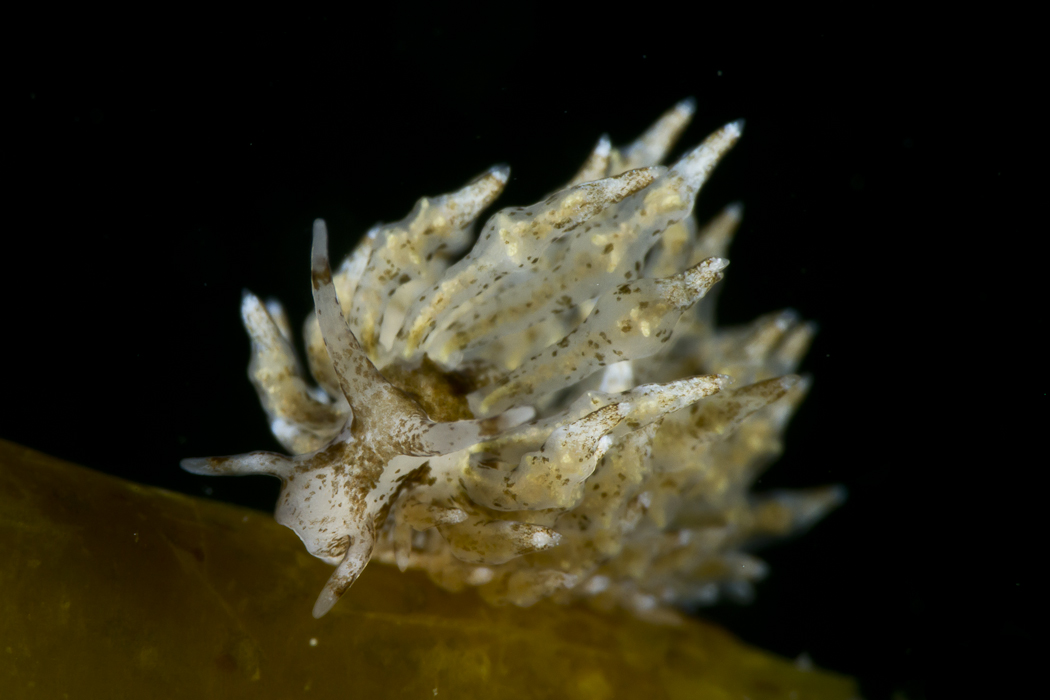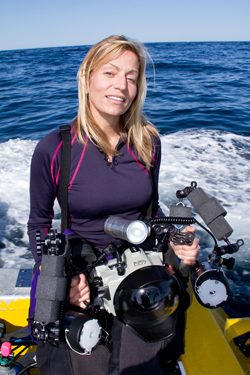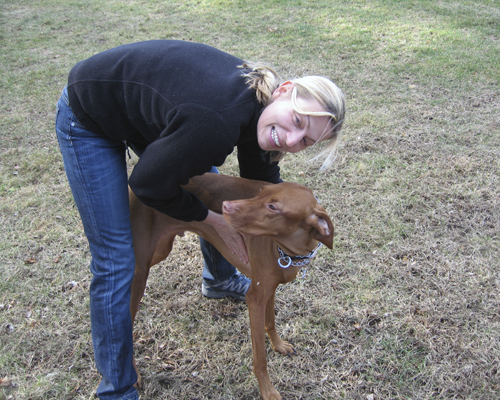 |
Eubranchus rustyus
Photo courtesy of Allison Vitsky
Crab Patch, La Jolla Shores, Calif
Nov. 2010
Copyright 2010
Eubranchus rustyus (Marcus, 1961) (revisited)
This illusive species of Eubranchus is extremely variable in coloration, and always miss-identified. One reason for the confusion is the photo in Ali & my field guide. A gorgeous shot, it is not typical, as Allison's is here. Needless to say if we ever reprint the book we will substitute the awesome photo above.
Allison first thought this critter was a Cuthona because of its size. The big give away for Eubranchus is the warty cerata. Note the 2-3 bands on warts on each ceras. The rhinophores are smooth. Ceratal cores are yellow to tan to brown. The body and cerata are covered with numerous white and brown specks. These spots differ from Eubranchus misakiensis (Bill Rudman's Sea Slug Forum) which has oval spots, not specks. Both have a subapical brown band on the rhinophores. The tips of the cerata are always white.
Found on the hydroids Obelia and Plumularia. Size - up to 25 mm. Range - Mexico to Alaska
Great photos Allison!.
Allison with Cannon 7D

|
|
Gig Harbor, Washington
Nov., 2010
Allison at play with friend

|
One of my favorite things about living in San Diego is year-round access to dive sites where I am able to see things change season to season! La Jolla Shores is one of my favorite places to dive, especially the somewhat-overlooked areas, like the detritus field (also known as the “Crap Patch”, a fitting name I first heard from fellow local ‘branchers Terry Strait and Kim Mitchell) and the sand flats just above the main wall. Nudibranchs are always present in these areas, though sometimes they can be a bit hard to find , and the surge can make shooting them a bit tough.
We were swimming in from a recent dive at the Crap Patch, and I spotted a clump of hydroids in the sand that was dotted with many small rings of eggs. Looking closer, I saw some very small, pale nudibranchs that were feasting away. We were low on air, so shooting them was not an option. As a result, I did what any San Diego nudibranch fanatic would do – I went back the next day, hoping to find them again – I did, and I spent the last 10 minutes of my dive shooting the tiny nudibranchs.
As with all tiny critters, I shot these Eubranchus with a 100 mm lens and a Macro Mate diopter on my Canon 7D. I use 2 strobes, usually Sea and Sea YS 250s, but I have been shooting with a narrow snoot on one strobe (this greatly minimizes backscatter), and using the second strobe for fill light only. When not diving, I support my obsession with my day job as a veterinary pathologist.
Send Allison email at avitsky@msn.com |

|
